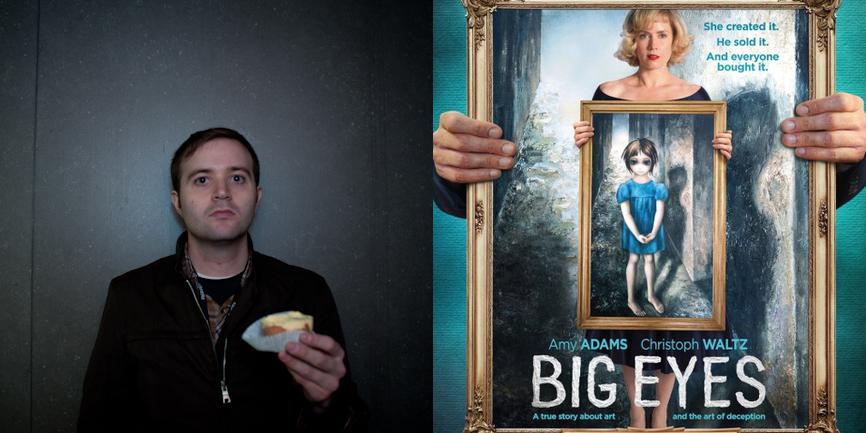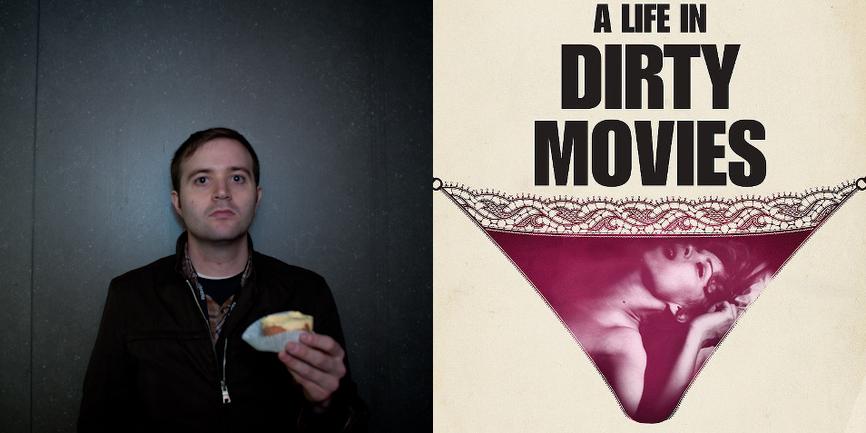All art is a put-on. The difference between someone who paints the walls of their living room red and someone who paints a large canvas the exact same color and hangs it in a gallery is that the second person has the audacity to call himself an “artist.” That’s basically all it takes. It’s art because the artist says it is, and all artists are self-appointed. Onto this already slippery slope walk Walter and Margaret Keane, the husband and wife who popularized the mass production of paintings, which Margaret executed and Walter claimed as his own. The artistic merits of the Keanes’ big-eyed waif paintings are debatable in and of themselves, initially presented as art before they were written off as kitsch and then reappraised as kitschy art, or arty kitsch. Oh, postmodernism! I’ve had multiple Keanes hanging in my apartments over the years — which is more than I can say about Picasso, or Van Gogh, or really any other artist. And I’ve been reading about Big Eyes, Tim Burton’s biopic of the Keane’s marriage and legal battles, for as long as news has been published about it. And during that time, I’ve been cautiously curtailing my optimism.
I’ll make a confession — if it wasn’t for Tim Burton, I wouldn’t be a filmmaker. I remember being aware of his name at a very early age, conscious that the movies I loved and watched over and over — Beetlejuice, Batman, Pee-wee’s Big Adventure — were all created by a man named Tim Burton. I don’t think I was aware of any other film directors beyond Spielberg (duh) and Hitchcock (my mother’s favorite). When Ed Wood came out in 1994, 12-year-old me wasn’t allowed to see R-rated movies. But so great was my love of Burton that my parents made an exception. I felt very adult walking into the theater with my father and taking a seat. I don’t remember there being that many other people in the theater, or maybe the ensuing experience made them all disappear. Ed Wood was a revelation for me. Two brand-new concepts were simultaneously introduced to my pre-adolescent brain:
1. You don’t need millions of dollars and famous actors to make a movie. You can make movies any way you want to, with your friends, with strange people you meet, with weirdos who just have that special something. You can steal the equipment. You can shoot on cardboard sets. It doesn’t matter, just make it.
2. Just because something isn’t traditionally “good” doesn’t mean it is without merit. In fact, a movie’s imperfections, misguided decisions and outright failures can make it more interesting than so-called “professional” productions. (As John Waters’ Cecil B. Demented would put it to me six years later, “Technique is nothing more than failed style.”)
And these ideas basically changed my life. Without these concepts bubbling in my brain, I would never have written a script or picked up a camera. Soon thereafter, my grandfather passed down a VHS camcorder and I started making little movies for school assignments. And now it’s 20 years later and well over a decade since I’ve really enjoyed new work from the filmmaker that started it all for me. The last time I saw a Burton movie in the theater, it was because I had literally no other choice. My girlfriend and I were stuck in an awkward situation at a miserable bed-and-breakfast that we had to spend as little time in as possible. Looking for any excuse to get out, we drove over an hour away to a run-down multiplex to see Dark Shadows, which, objectively speaking, is completely devoid of any sense of joy or artistry.
But that kid inside me keeps hoping Burton will swing back around. So I clambered for this assignment and, in a whirlwind of catching up on every other movie I’d missed in 2014, I went to a screening room near Times Square to watch Big Eyes.
Ed Wood and Big Eyes cover similar territory on the surface. (The new film marks Burton’s re-teaming with the screenwriting duo of the earlier one, Scott Alexander and Larry Karaszewski.) Both movies tell the stories of artists whose work was disposable at the time of its creation — neither Wood’s Z-grade exploitation movies or Margaret Keane’s mass-produced little lost children were made to last. And yet they have. There’s something beneath the surface that gives their work an infectious power. For Wood, it’s the joy, and for Keane, the sorrow. And this is the big split between these two artists, and the defining element that separates Burton’s respective biopics. In Ed Wood, the possibilities of art are endless. If you have a dream and the chutzpah, anything is possible. In Big Eyes, art is a prison. Art is the means by which Walter controls Margaret, boosting his ego and crushing hers. That crushed spirit cries out in the oversized watery eyes of every little creature her husband took credit for, begging/pleading/screaming for acceptance/understanding/a home.
The opening image of Big Eyes is incredibly telling. Pulling out from the delicate surface of a canvas, one of Margaret’s iconic children is quickly covered by a perfect photocopy. Then another, and another. The real deal buried in a stack of imitations. Margaret is alone in her world, and she’s also the only authentic thing in it. Burton co-opts Amy Adams’ grounded, fragile Margaret with myriad artifices and burlesques. The most obvious is Christoph Waltz’s lurching, teeth-gnashing Walter — a dreamer and a monster, but never, not even for a second, a real person. In keeping Walter’s secret and living under his tyranny, Margaret sees her dreams and ambitions stripped of meaning and mass-produced. The characters in Big Eyes are mass productions, too, and the film’s narrative puts Margaret through the cliché-biopic paces. She is given one friend and confidant for the entire narrative, DeeAnn (Krysten Ritter, born to be in Burton movies) who is completely devoid of any recognizable personality. She’s a device, just like yellow journalist Dick Nolan (Danny Houston), whose innocuous voice-over narration adds nothing.
Exposition reigns, to the degree that Burton allows a ridiculously on-the-nose Lana Del Rey song to play over a mid-film montage. It’s a technique that keeps our empathy for Margaret firmly at bay. As authentic as Adams is, we never really understand why she loves painting or why she continues to do it after the nightmare is over. When asked why he’s stealing, Walter/Waltz says, “I always wanted to be a great artist.” But why? What about art is worth pursuing, and therefore worth stealing? The film doesn’t answer these questions, but maybe that’s because they have no answers to begin with. Despite its candy colors and high key photography, Big Eyes’ message may ultimately be that all art is a scam, no matter which way you cut it.
It’s a period piece for the Internet age, where most human interaction is vacant or fleeting and it’s hard to achieve success without being some kind of a fake. Watching its plot unfold isn’t dissimilar from scrolling down a Wikipedia page — all the facts are there, but there isn’t a heart. Don’t walk in expecting the warmth and hope of Ed Wood, but instead a sticky-sweet cousin to the ice-cold shock show of Gone Girl. If you’re making a movie about façades and emptiness, must tone, style and characters follow suit? I’m inclined to say yes, but to what end? Perhaps because of this, when Burton allows little moments to slip through, they’re especially potent. The film’s most powerful image comes early, in the form of an unfinished painting on Margaret’s canvas — one eye is complete and the other is a big black void. It sits there for maybe a minute but stays with you the rest of the movie. Like in the haunted faces of Margaret’s dime-a-dozen children, it’s a moment where you can feel the real artist in Burton shining through the empty construct he’s created. Maybe this is the end-product of the Hollywood machine the director has been grinding through for most of his career, or maybe he knows that if your target audience is everyone, you can only get away with little glimmers of truth.







